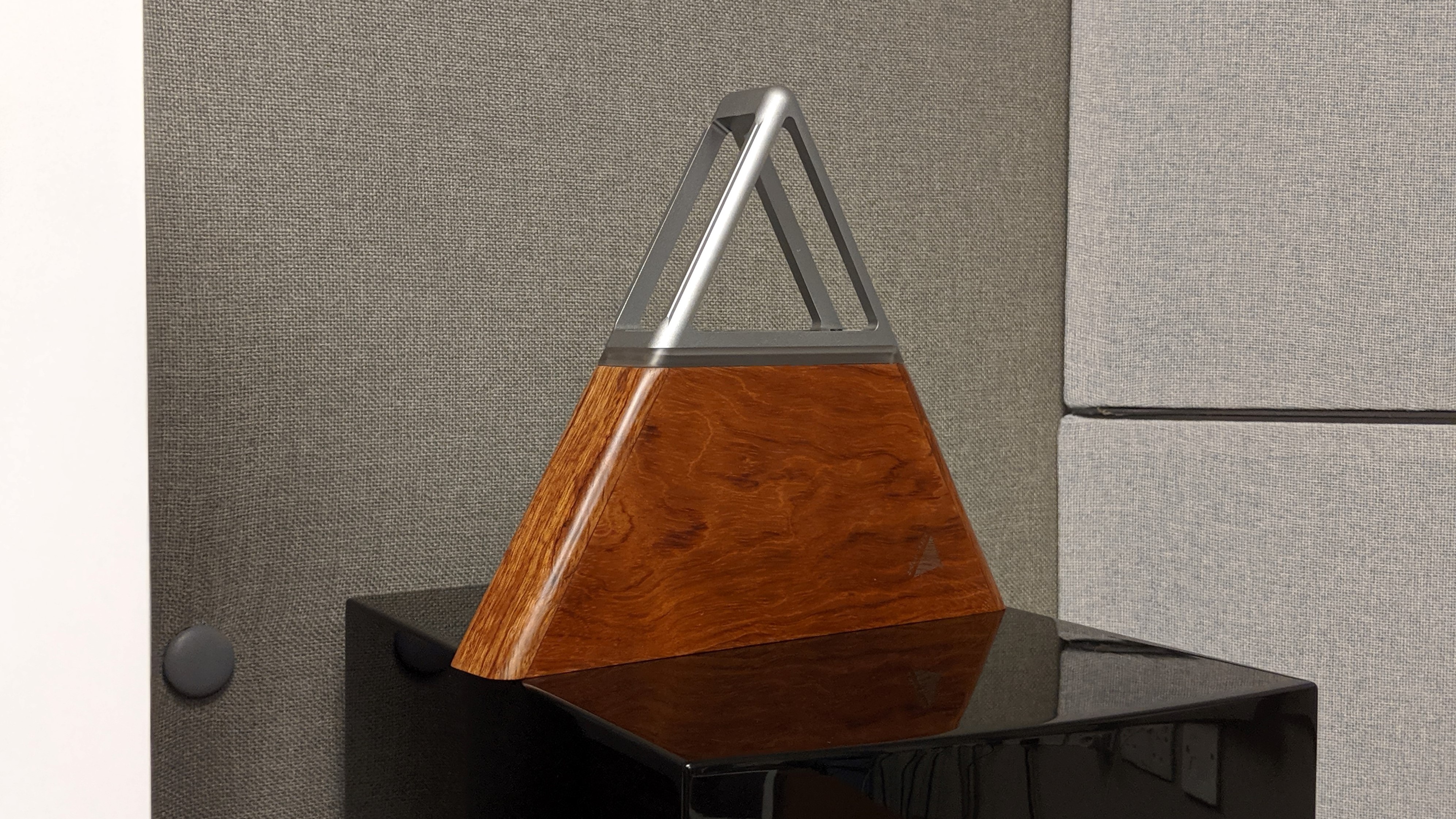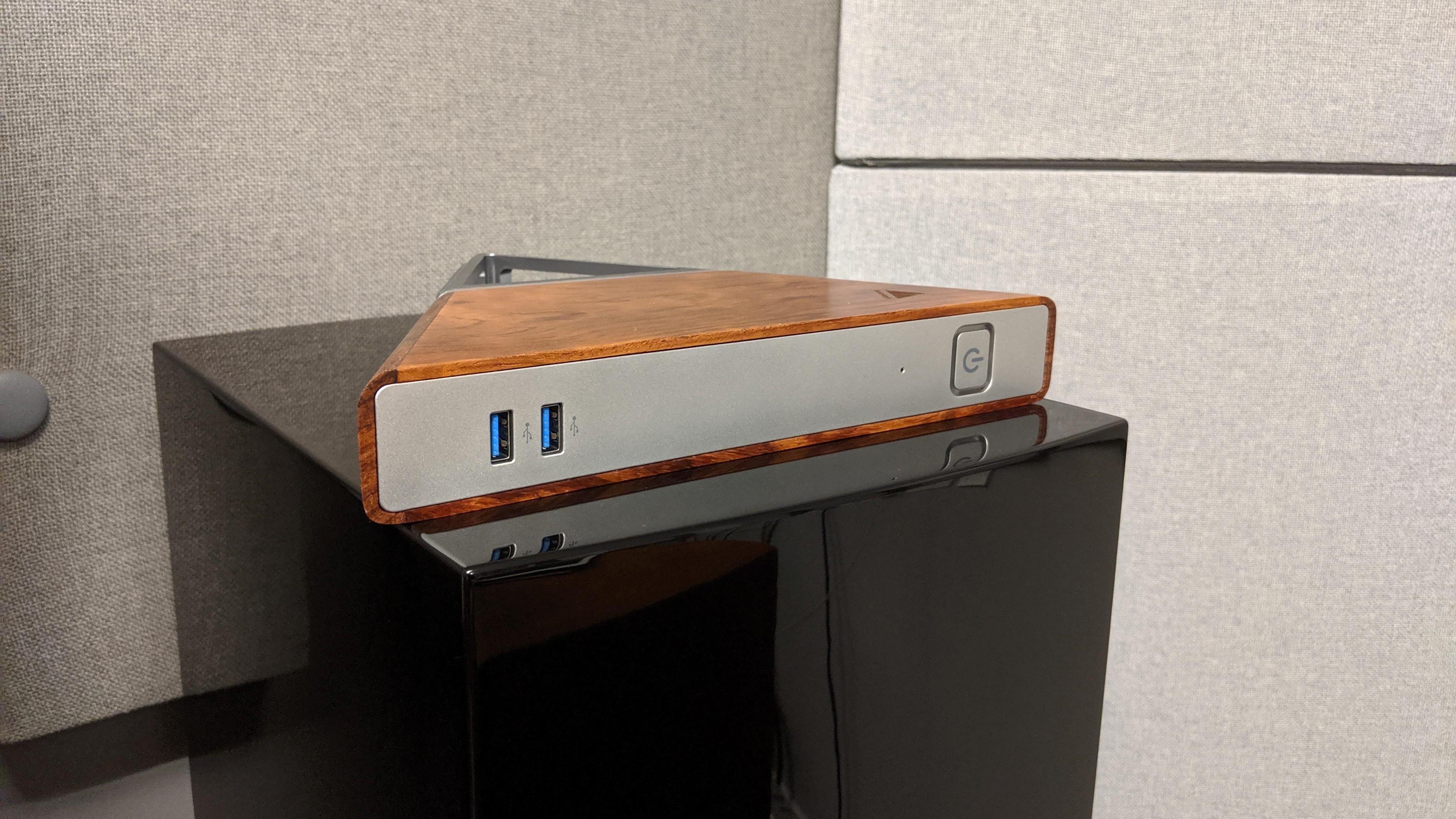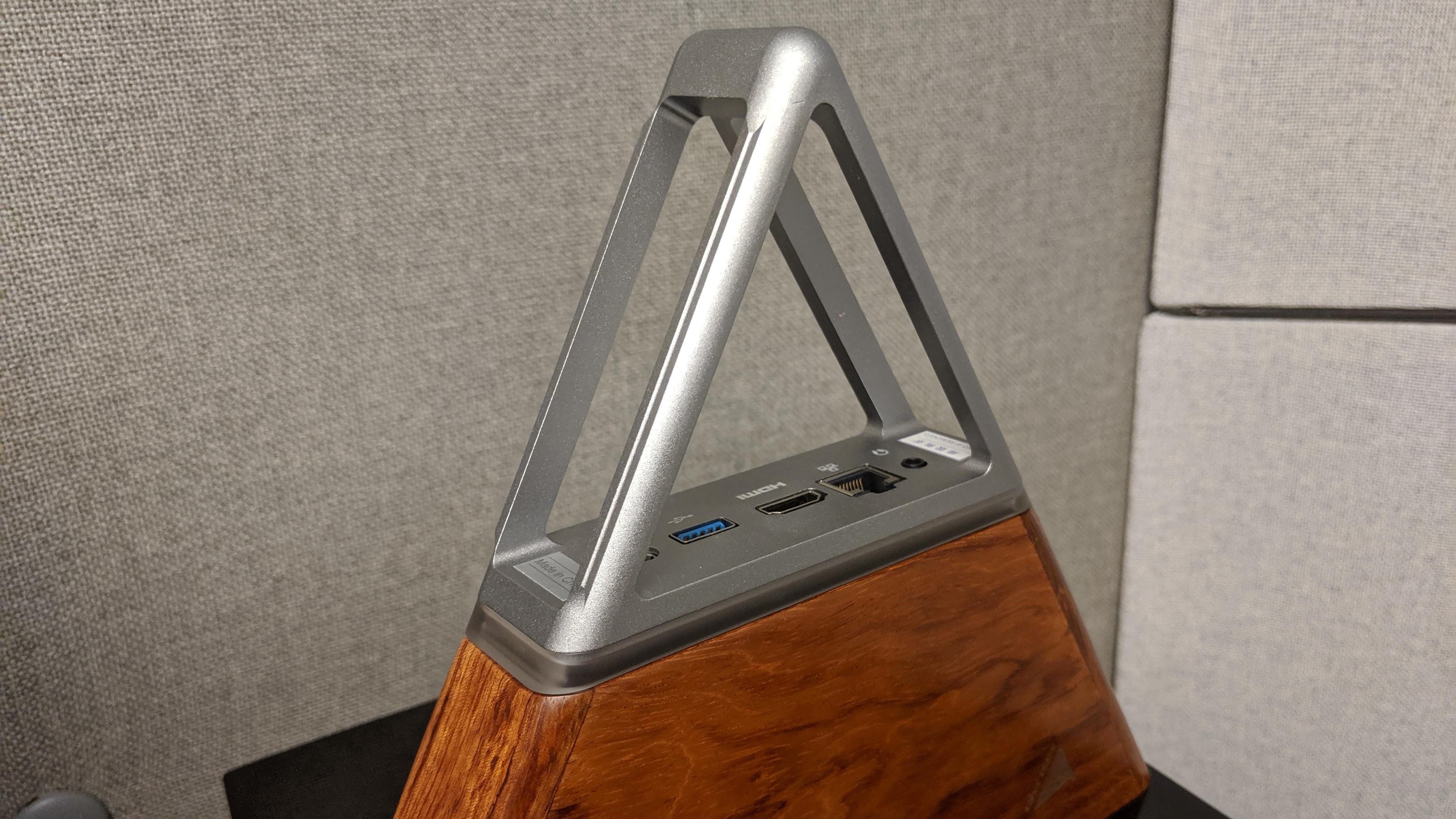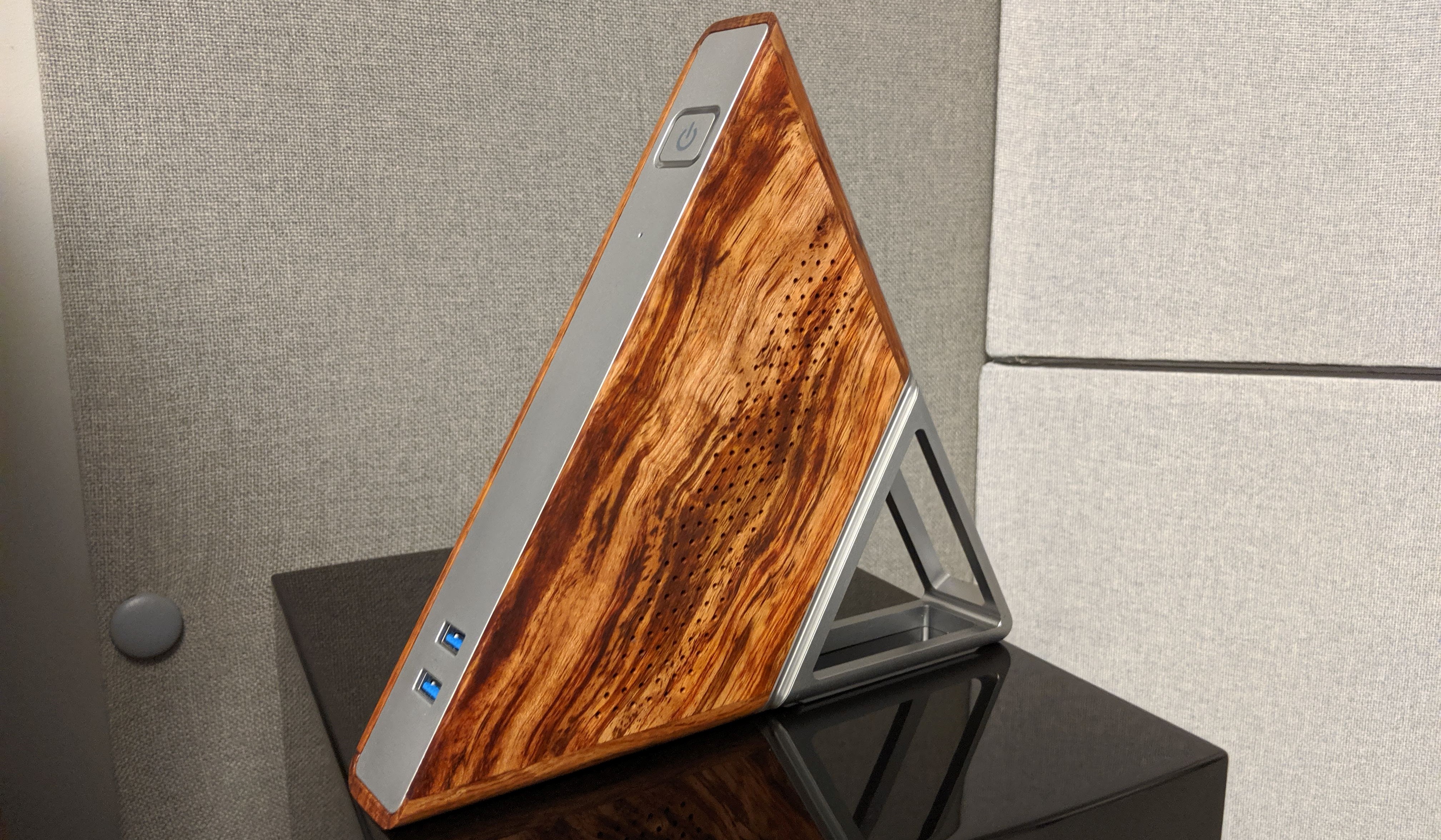TechRadar Verdict
The Acute AA B4 PC mini PC is the best mini PC you can get in that price range. Grab it while you can because it won’t be around for long.
Pros
- +
Fantastic value for money
- +
Gorgeous design and quality finish
- +
Balanced hardware configuration
Cons
- -
No user-accessible parts
- -
No card reader
- -
OS runs from eMMC
Why you can trust TechRadar
Back when it was launched in January 2018 at CES, near the peak of the Cryptocurrency fever - Bitcoin had only hit its all-time high of $17,060 just weeks before - the Acute Angle AA B4 PC was to symbolise a new concept; one where idling computers could be made to work and mine those precious virtual currencies. It didn’t happen partly because of the crash that followed and the fact that this device cost over $600 at launch.
Fast forward to late 2019 and entire stocks of this one-time wonder that is the Acute Angle PC are being shifted at a deep discount. The model we are reviewing today costs less than $155 at Gearbest (excluding any potential taxes, at the time of writing) and most importantly doesn’t come with any cryptocurrency bloatware.
- Want to buy tech from online Chinese retailers? Read this first.

Design
The Acute Angle AA B4 PC is unlike anything you’ve seen before, it even comes with its own fabric carry case. Its name provide a definite clue as to what makes it so special. It has the shape of an equilateral triangle and its casing is made out of aircraft aluminum and wood.

It can be positioned either vertically or horizontally but doesn’t have any bracket to allow it to be placed behind a screen. But then again why hide what is arguably one of the best designed mini PC we’ve seen to date.
There’s plenty of perforations to allow air to circulate and cool the components inside. You cannot access these unfortunately unlike other mini computers we have tested in the past. The whole thing looks polished and solid and wouldn’t look out of place in a posh office.

There’s three USB 3.0 ports, one HDMI, one audio, one Gigabit Ethernet port (powered by an Intel i210AT chip), a proprietary power port and a massive power button. No Type-C and no card reader sadly.
Hardware
Here is the Acute Angle AA B4 PC configuration sent to TechRadar Pro for review:
CPU: Intel Celeron N3450/4C/4T, 2MB, 1.1GHz
Graphics: Intel HD Graphics 500
RAM: 8GB DDR3
Storage: 64GB + 128GB SSD
Ports: 3x USB3.0, 1x HDMI, audio jack, RJ-45 gigabit Ethernet
Connectivity: Intel Wireless-AC 3165, Bluetooth 4.0
Weight: 660g
Size: 25.50 x 25.50 x 4.00 cm
The Acute Angle PC is powered by an old Apollo Lake based Celeron CPU, the N3450, one that was launched three years ago. However given the current CPU stock shortage, one that’s bring back some exotic and even more obsolete parts, the choice of the N3450 shouldn’t matter.
It is a 4-core, 4-thread CPU running at 1.1GHz, with 2MB of cache and a TDP of 6W; even with such a low number, it does actually come with a fan. Graphics are handled by an Intel HD graphics 500 GPU. There’s 8GB of DDR3 memory (in dual channel configuration), a 128GB SSD (unbranded) and, surprise, surprise, 64GB eMMC which hosts the OS.
It is not the first time we’ve seen such a combination but we still remain baffled as to why that exist and why the operating system always lands on the slower storage. Other noteworthy features include Bluetooth 4.0 and 802.11.ac Wi-Fi.
In use
This is how the Acute Angle AA B4 PC performed in our suite of benchmark tests:
Passmark: 883.6
Passmark CPU: 1668
CPU-Z: 130.7 (single-thread); 552.5 (multi-thread)
Geekbench: 303 (single-core);914 (multi-core); 879 (compute)
Cinebench: CPU: 267
CrystalDiskMark: 190.5 MBps (read); 107.7 MBps (write)
Novabench: 609
Atto: 122 MBps (read, 256mb); 288 MBps (write, 256mb)
Sisoft Sandra (KPT): 0.39
Windows Experience Index: Did not run
The AA B4 PC was barely warm to the touch during our benchmarks but the fan did kick in under load. First time it started, an application (System Preparation Tool) ran and clean up the computer to provide what it coined a system “out of the box experience”.
When it comes to actual performance, the Acute Angle is a decent performer thanks to its capable CPU and ample amount of storage and system memory. We couldn’t get Windows Experience Index to run on it but other than that we got the numbers we were looking for.
The big disappointment remains the use of eMMC as the storage sub-system rather than the more capable SSD; a missed opportunity. Informal tests show that the SATA-based SSD is more than twice faster than its eMMC alterego.
You should, in theory, be able to swap the two but it is likely to be outside of what is considered to be acceptable for the average user.
Competition
As a thin client, there’s no competition at this price range unless you want to go down the refurbished route.
The closest competitor we’ve found is the SharerDP X6620M Mini PC which retails for $200 - a 33% premium - with a 128GB SSD and 8GB of RAM. It sports an Intel Celeron J1900 and an industrial finish with a legacy VGA connector, a place for a spare 2.5-inch HDD, no fan and 802.11ac.
A quick look at what one of the big brand offers was even more sobering. The Lenovo Ideacenter 310S costs almost twice the price at $299.99 (although at the time of writing you could save $45 with a coupon) and while the processor is a better on, it only has 4GB of RAM and a traditional hard disk drive.
Business verdict
The design of the Acute AA desktop mini PC may or may not be to your taste but what’s undeniable is that it represents some fantastic value for money and there’s a good reason for that. This is a one-off, an exceptional bargain that sadly is unlikely to have a bis.
The general performance of the device is better than what you’d usually get at this price range. A faster Celeron CPU, twice the amount of system memory and a 128GB SSD cap what we consider to be an eye-pleasing aesthetic.
It is just a real shame that the SSD was not used to accommodate the operating system, that would have provided a free performance boost.
Business will appreciate the price tag and the clever design of this thin client which makes it stand out. Sadly support is a big unknown and it will be a gamble for the prospective buyer. As always, these are better suited as end-user/front desk machines; getting a few extra units is always handy to cover RMA hassles.
- We’ve picked out all the best business computers

Désiré has been musing and writing about technology during a career spanning four decades. He dabbled in website builders and web hosting when DHTML and frames were in vogue and started narrating about the impact of technology on society just before the start of the Y2K hysteria at the turn of the last millennium.
